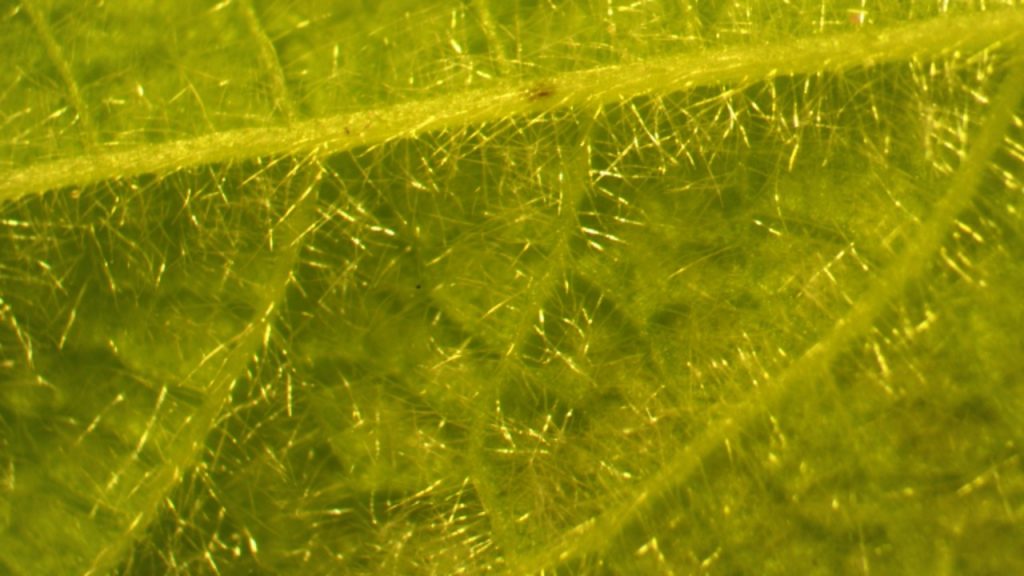Family: Rosaceae
Common name: Thimbleberry
E-flora BC: https://linnet.geog.ubc.ca/Atlas/Atlas.aspx?sciname=Rubus%20parviflorus
Wikipedia: https://en.wikipedia.org/wiki/Rubus_parviflorus
Thimbleberry is abundant in our area, it prefers moist sites in open forests, along streams and ditches, but you find it in drier places too. Depending on the site, they can be quite short (~2 feet in a dry spot) to up ~ 2 m tall. The mature stems of thimbleberry are rust-coloured to grey (very young shoots are green – and edible), the stems lack prickles (thorns). The plant forms large stands or thickets, with individual stems originating from underground rhizomes.
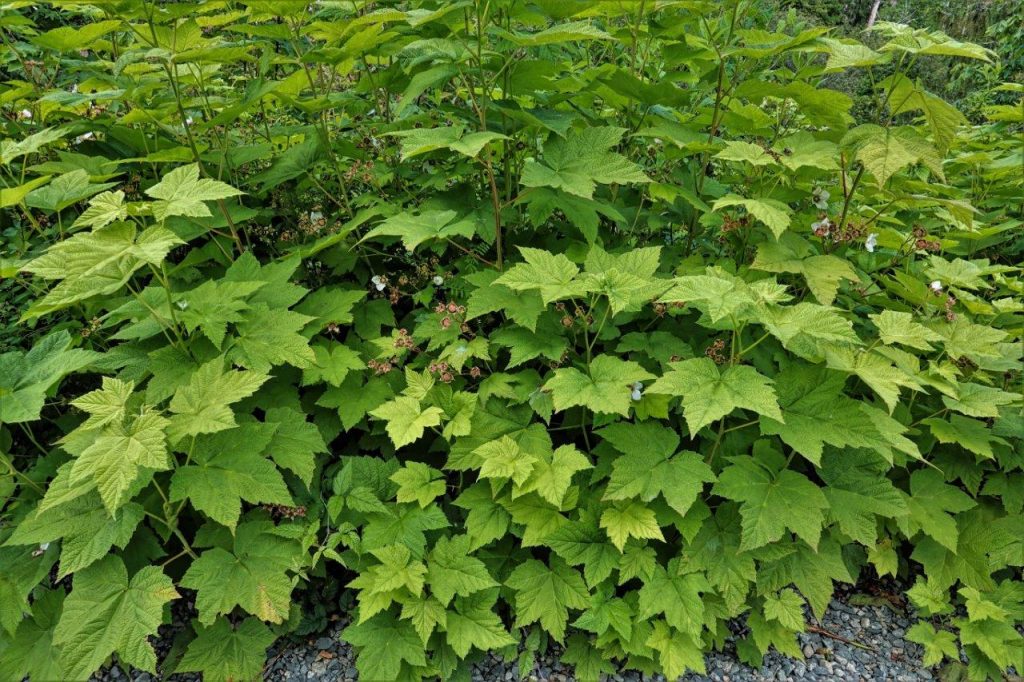
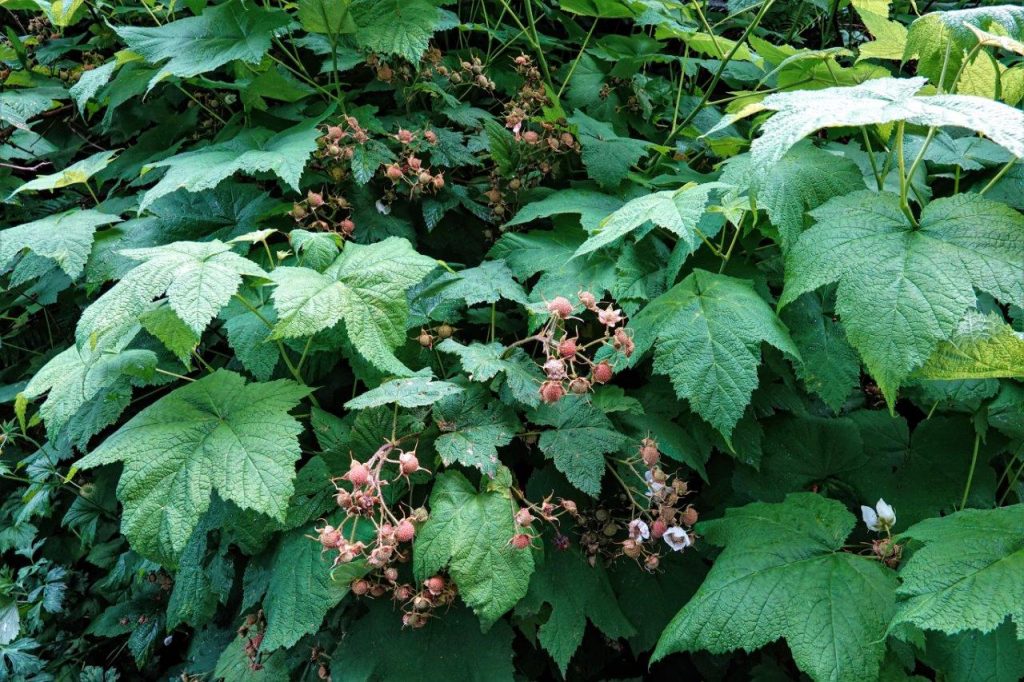
Leaves are attached in a spiral (alternate) pattern along the stem, and they are superficially maple leaf-shaped. The texture of the leaf is very distinct, like dense soft velvet, due to dense hairs on both surfaces.
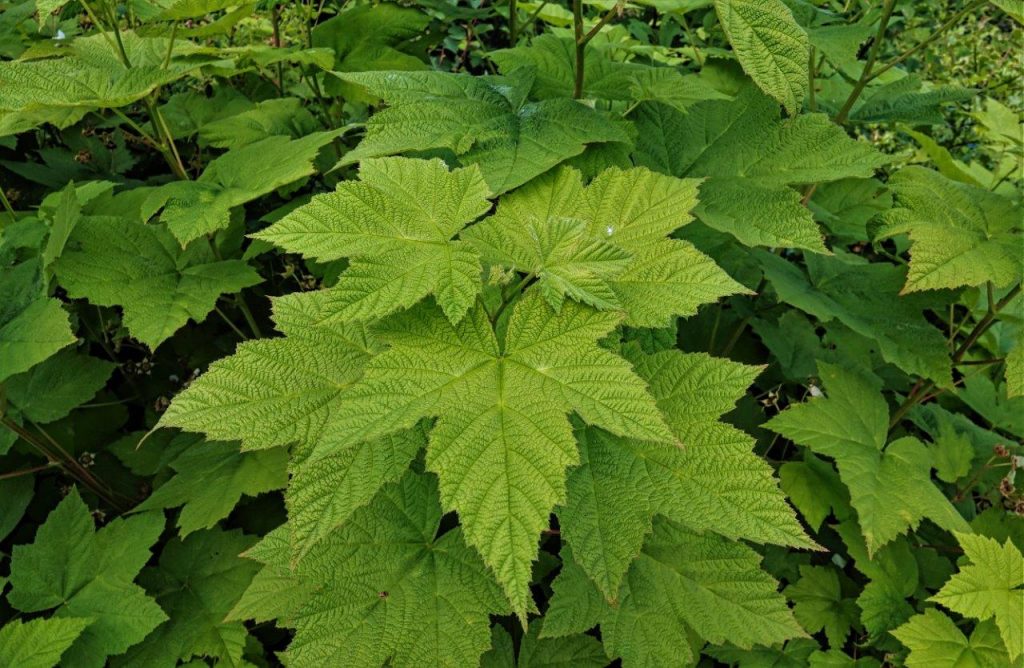
The scientific name of thimbleberry R. parviflorus might be a bit of a botanical joke. ‘Parvo’ refers to ‘small’, and ‘florus’ is, of course, ‘flower’. Hence the name is ‘small-flowered’. In reality, the thimbleberry flower is one of the largest in its genus, often more than 2 inches in diameter and quite striking. You should compare the thimbleberry flower to that of the Nootka rose (Rosa nutkana), you’ll see how similar they are – both having flowers that are typical of the Rosaceae family.
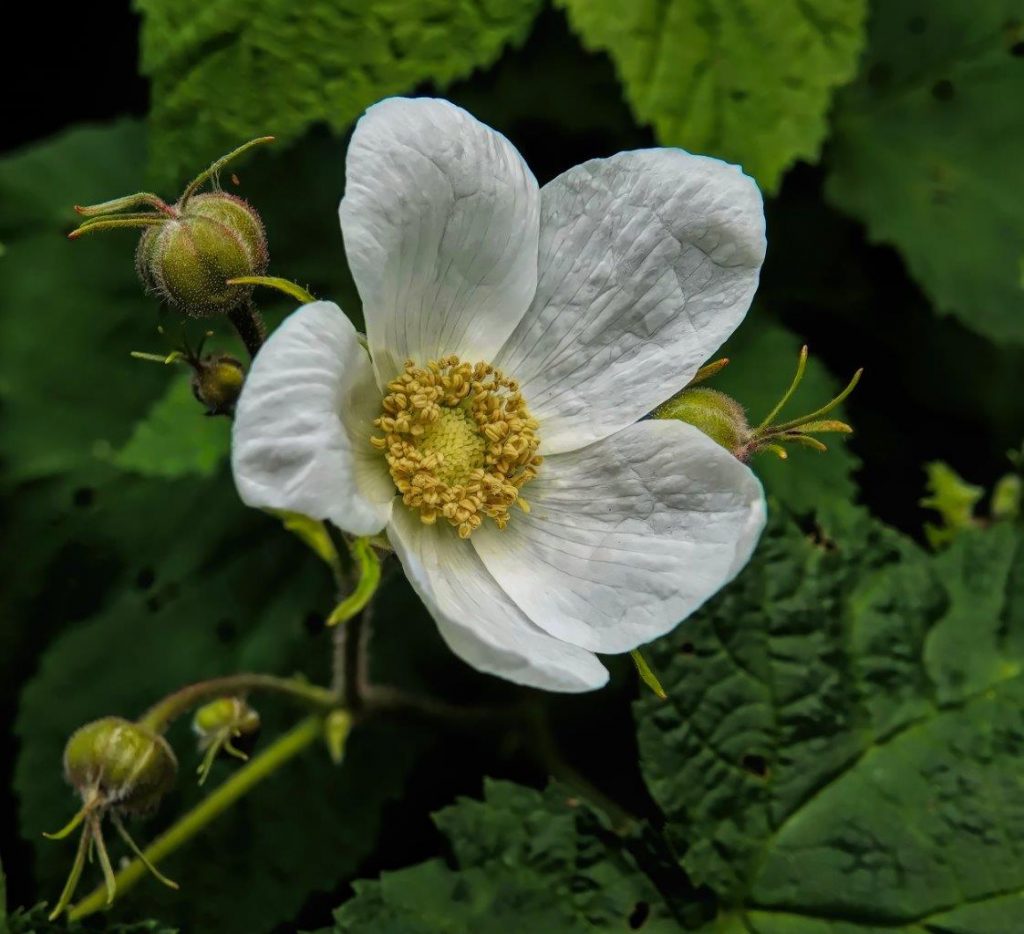
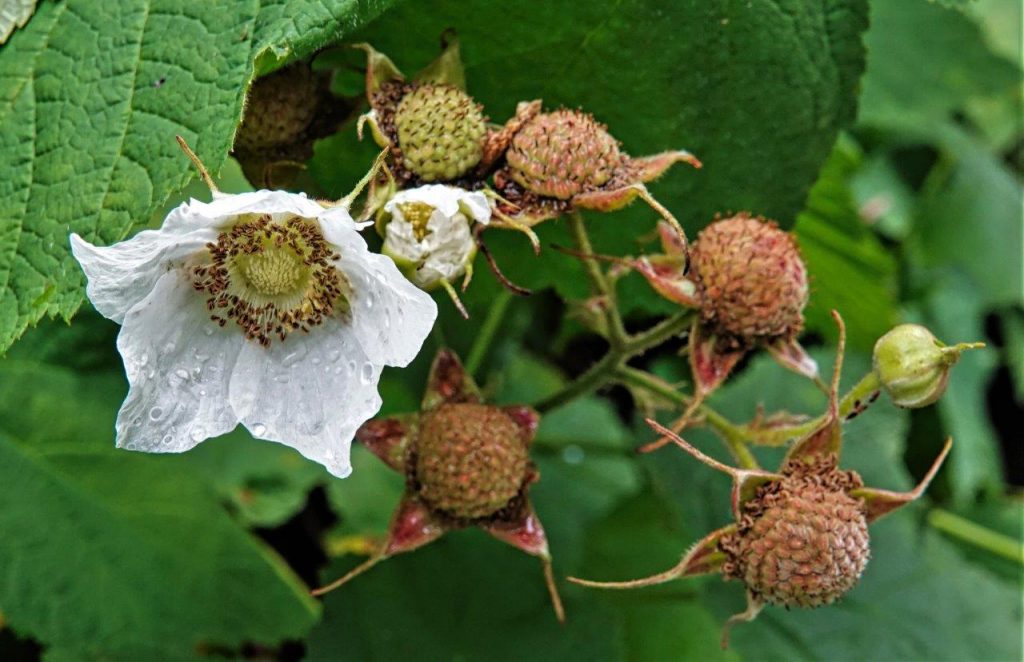
The fruit of thimbleberry looks like a flat raspberry. The raspberries that we grow in our gardens are developed from the European species Rubus idaeus – closely related to both our thimbleberry, salmonberry and trailing blackberry (all of which belong to the genus Rubus).


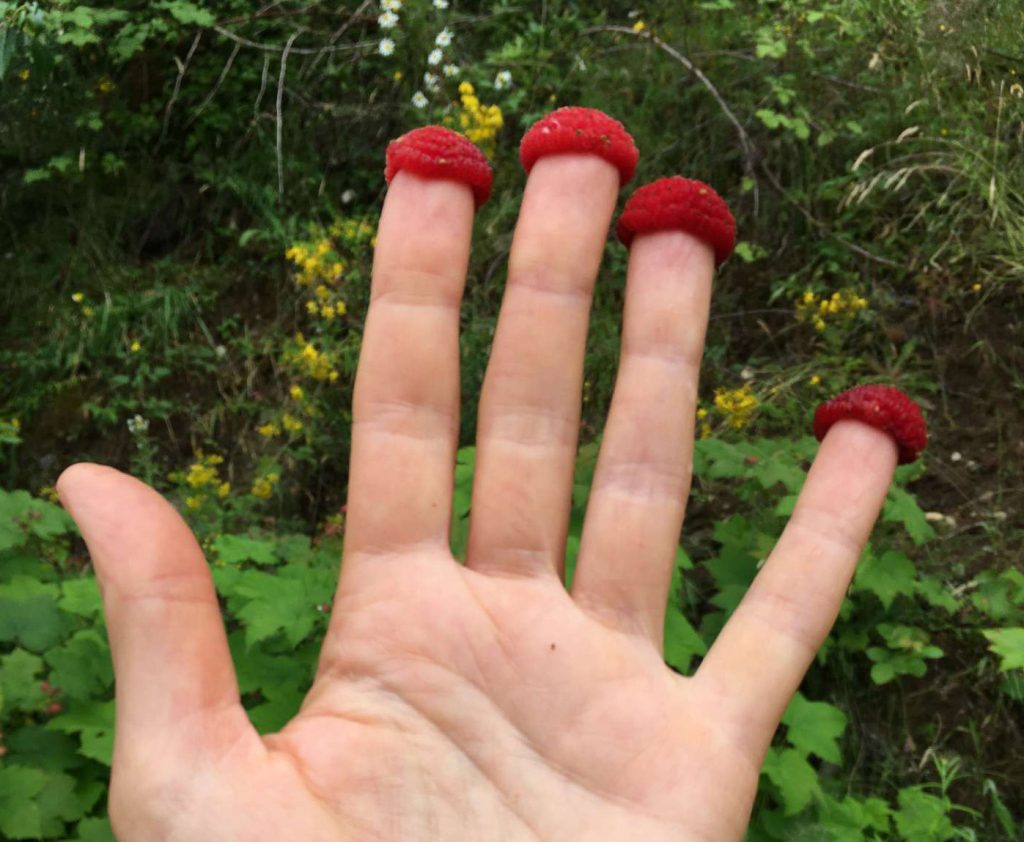
The fruits of thimbleberry were eaten by all First Nations peoples in our area. Additionally, the tender new shoots to appear in the spring were eaten as a green vegetable.
Compare and contrast thimbleberry to Himalayan blackberry (R. bifrons) and the two native Rubus species listed on this site: salmonberry (R. spectabilis) and trailing blackberry (R. ursinus). Focus on leaf-shape and number of leaflets per leaf, growth habit (trailing or upright), presence or absence of prickles on stem.

